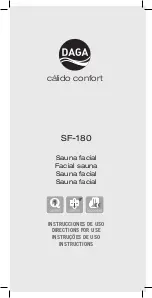
655 and 655R Actuators
Instruction Manual
Form 1292
July 2007
3
CAUTION
To avoid premature wear of the
diaphragm due to debris in the
pressure line to the diaphragm, install
a strainer in the pipeline ahead of the
regulator or relief valve.
Before installing the actuator, inspect it for any
damage. Also, keep any adjacent piping clean and
free of pipe scale or other debris that could possibly
disrupt service. It is recommended that a strainer be
installed in the pipeline ahead of the regulator or
relief valve to protect it while in service. And a
conventional three-valve bypass (see figure 2)
should be placed around the regulator or relief valve
to permit continuous operation when it is being
installed or repaired.
Actuator Mounting
The actuator may be installed either above or below
the pipeline.
CAUTION
In steam service applications, avoid
premature wear of the diaphragm, due
to high temperature steam, by
installing the valve with the actuator
positioned below the pipeline.
If the regulator or relief valve is to be used for steam
service, the valve should be installed with the
actuator positioned below the pipeline, and the
control line should be sloped down toward the
diaphragm casing. This is to ensure that any forming
condensate will maintain a water seal to protect the
diaphragm.
The following procedure describes how to mount the
actuator on either a push-down-to-close or a
push-down-to-open valve so that the actuator stem
and valve stem thread engagement will allow full
travel and proper shutoff. Refer to figure 3 for
actuator mounting components. Key numbers refer
to figure 4 unless otherwise stated.
1. Turn the adjusting screw (key 10) into the yoke
(key 7) to force the diaphragm (key 2) and diaphragm
plate (key 4) against the upper diaphragm casing
(key 1).
2. Perform the following steps as appropriate for
either push-down-to-close or push-down-to-open
valve action.
CAUTION
In the following procedures, do not
rotate the valve plug while it is seated
since this may cause damage to the
seating surfaces and thereby allow
excessive leakage. Also, during travel
adjustment, use tools carefully to
avoid damaging the valve plug stem. A
damaged stem could cut the packing
and allow leakage.
For Push-Down-To-Close Valves:
a. Place the actuator part way over the valve
stem. Then, place the yoke locknut over the valve
stem, and slide the travel indicator disk (key 11, if
used) on top of the hex nuts (key 12).
b. Set the actuator onto the valve body. The
length of the valve stem will prevent the actuator
yoke (key 7) from sitting on the bonnet properly.
Measure the distance from the bottom of the
actuator yoke to the mating shoulder on the
bonnet, and then add the valve plug travel to this
measurement.
c. Raise the actuator so the valve plug can be
lifted off the seat ring.
Note
Either turn the actuator, or tighten the
hex nuts together, and use a wrench
on the hex nuts to turn the valve plug
and stem assembly.
Thread the valve stem into the actuator stem the
distance measured in the previous step.
d. Lower the actuator onto the valve body
bonnet, and tighten the yoke locknut.
e. Connect the pressure control lines as
described in the Loading Connection portion of
this section.


































